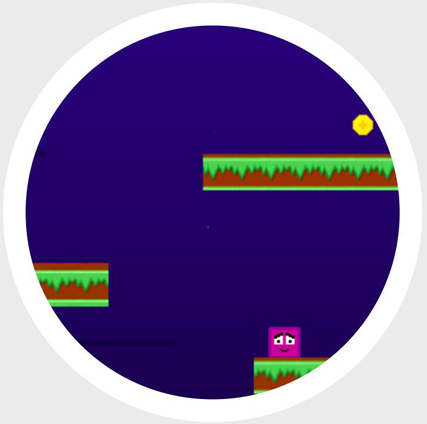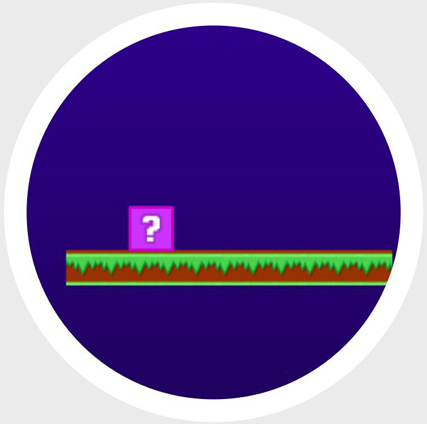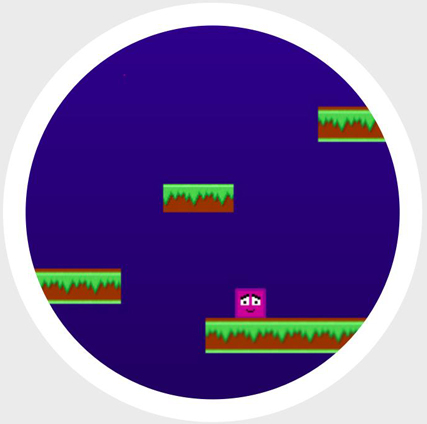Play the game.
I have created these game levels for the purpose of this dissertation, in order to illustrate the principle being discussed.
Game 2 The Box Game [designed and created by S. Bezzina]
Metaplay.
Metaplay refers to higher order thinking over the cognitive processes involved in play.

Level 1
The bottom-up well-ordered environment in games promotes the early levels as ‘fish tanks’, where the player can interact with and master the basic tools and skills before moving on to the next levels (Gee 2004).

Extra Life
As the player progresses, the game adapts to the player’s performance; unlocking individual rewards, independent of the level of competency achieved (Gee 2007).

High or Higher?
Different ways to progress allow different styles of play (Gee 2005).
Figure 12 Principle 2: Metaplay [edited and adapted by S. Bezzina] (Sploder #1 n.d.)
In line with a one-size-fits-all mindset, traditional means of assessment tend to be generic and static (Joint Information Systems Committee (JISC) 2007). A game-informed assessment seeks to convey the pleasant frustration experienced by players during gameplay (Gee 2004) to the assessment context, by allowing the assesses to monitor their progress (Crooks 1988) in climbing the ‘ladder of challenges’ (Greenfield 1984, p 110) during assessment. This inclusive and personal approach to assessment (Joint Information Systems Committee (JISC) 2007) embodies good game design learning principles as it rewards different ways of learning and achievement (Chickering and Gamson 1991), by providing diverse ways of progression. These principles are exemplified in computer adaptive testing (CAT), where the early questions are a ‘concentrated sample’ (Gee 2007, p 142) of the overall task. As such, the assessment activity becomes a ‘cycle of expertise’ (Gee 2004, p 20), with the required knowledge and skills found within but on the outer edge of the ‘regime of competence’ (Gee 2007, p 68) of the learners. This scaffolding strategy responds to the needs of the individual learners by allowing them to fail better each time, thus promoting a replay and practice philosophy (Gee 2007). Levelling up in CAT depends on the performance of the individual student on the earlier items (Challis 2005) and is facilitated through specific and targeted feedback (Bull and McKenna 2003). This allows the learners to self-assess and self-regulate their progress and helps them in closing the existing gap in view of the required achievement (Nicol and Macfarlane-Dick 2006).
